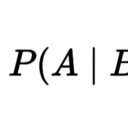Protective Effects of Sesquiterpenoids from the Root of Panax ginseng on Fulminant Liver Injury Induced by Lipopolysaccharide/d-Galactosamine.
Nøgleord
Abstrakt
It is reported that sesquiterpenoids from Panax ginseng (SPG) possess various pharmacological activities, for example, antidepressant, antioxidative, and anti-inflammatory activities. The purpose of this study was to examine the hepatoprotective effects of SPG (2.5 and 10 mg/kg, i.g.) on fulminant liver injury induced by d-galactosamine (d-GalN) and lipopolysaccharide (LPS) and discuss its mechanisms of action. After 24 h of d-GalN (400 mg/kg, i.p.) and LPS (25 μg/kg, i.p.) exposure, the serum levels of alanine transaminase (ALT) and aspartate transaminase (AST), hepatic malondialdehyde (MDA) level, hepatic activities of superoxide dismutase (SOD), catalase (CAT), and glutathione (GSH), and hepatic tissue histology were measured. Expression levels of tumor necrosis factor α (TNF-α) and interleukin-1β (IL-1β) were detected by enzyme-linked immunosorbent assay and real-time polymerase chain reaction. Moreover, the nuclear factor κ-light-chain-enhancer of activated B cell (NF-κB), nuclear factor erythroid 2-related factor 2 (Nrf2), sirtuin type 1 (Sirt 1), and heme oxygenase 1 (HO-1) were determined by western blotting. The results indicated that SPG evidently restrained the increase of serum ALT and AST levels induced by d-GalN/LPS. SPG obviously downregulated TNF-α and IL-1β levels and their mRNA expression in liver. In addition, d-GalN/LPS injection induced severe oxidative stress in liver by boosting the MDA level as well as decreasing CAT, GSH, and SOD capacities, and SPG reversed these changes. Meanwhile, SPG inhibited NF-κB activation induced by d-GalN/LPS and upregulated Sirt 1, Nrf2, and HO-1 expression levels. Therefore, SPG might protect against the fulminant liver injury induced by d-GalN/LPS via inhibiting inflammation and oxidative stress. The protective effect of SPG on fulminant liver injury induced by d-GalN/LPS might be mediated by the Sirt 1/Nrf2/NF-κB signaling pathway. All of these results implied that SPG might be a promising food additive and therapeutic agent for fulminant liver injury.



